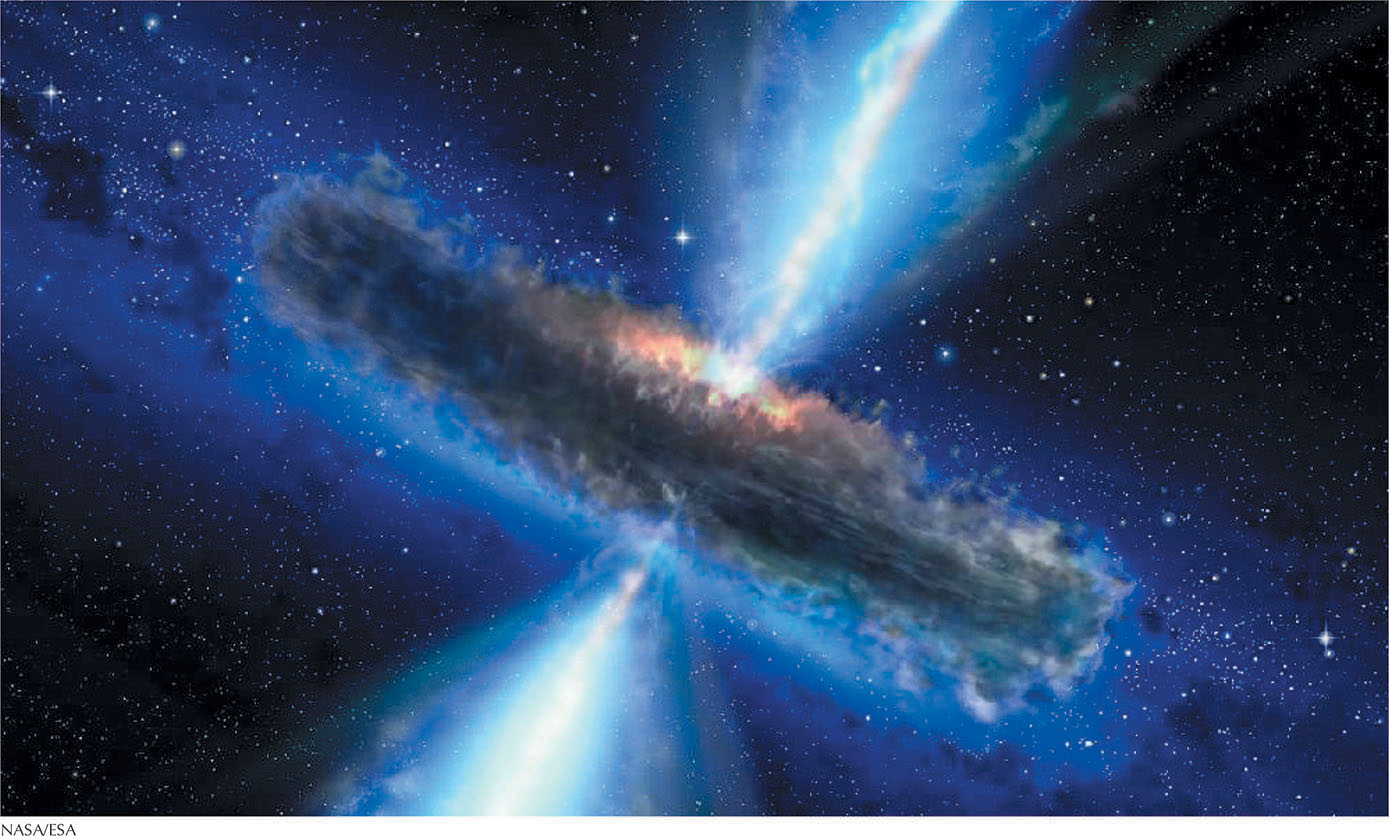513
CHAPTER 17

Quasars and Other Active Galaxies
WHAT DO YOU THINK?
 What does “quasar” stand for?
What does “quasar” stand for?
 What do quasars look like?
What do quasars look like?
 Where do quasars get their energy?
Where do quasars get their energy?
Answers to these questions appear in the text beside the corresponding numbers in the margins and at the end of the chapter.
514
In this chapter we look at active galaxies—energy sources of almost unimaginable power. While the short-lived outputs of supernovae boggle the mind, they represent miniscule amounts of energy compared to quasars, Seyfert galaxies, radio galaxies, and BL Lac objects. Quasars, for example, emit more energy each second than the Sun does in 200 years, and they continue to do so for millions of years. Evidence shows that most galaxies undergo periods of similar activity. Some truly remarkable activity must occur deep within quasars and other ultrahigh energy sources to make them so luminous.
In this chapter you will discover
 bright and unusual objects called active galaxies
bright and unusual objects called active galaxies
 distant, luminous quasars
distant, luminous quasars
 the unusual spectra and small volumes of quasars
the unusual spectra and small volumes of quasars
 the extremely powerful BL Lac objects
the extremely powerful BL Lac objects
 supermassive black holes that serve as central engines for radio galaxies, quasars, Seyfert galaxies, and BL Lac objects
supermassive black holes that serve as central engines for radio galaxies, quasars, Seyfert galaxies, and BL Lac objects